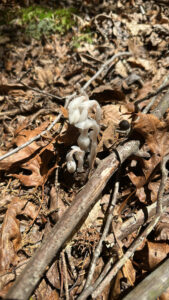Boo-Tanical Wonders: The Spooky Side of Nature
go.ncsu.edu/readext?1100750
en Español / em Português
El inglés es el idioma de control de esta página. En la medida en que haya algún conflicto entre la traducción al inglés y la traducción, el inglés prevalece.
Al hacer clic en el enlace de traducción se activa un servicio de traducción gratuito para convertir la página al español. Al igual que con cualquier traducción por Internet, la conversión no es sensible al contexto y puede que no traduzca el texto en su significado original. NC State Extension no garantiza la exactitud del texto traducido. Por favor, tenga en cuenta que algunas aplicaciones y/o servicios pueden no funcionar como se espera cuando se traducen.
Português
Inglês é o idioma de controle desta página. Na medida que haja algum conflito entre o texto original em Inglês e a tradução, o Inglês prevalece.
Ao clicar no link de tradução, um serviço gratuito de tradução será ativado para converter a página para o Português. Como em qualquer tradução pela internet, a conversão não é sensivel ao contexto e pode não ocorrer a tradução para o significado orginal. O serviço de Extensão da Carolina do Norte (NC State Extension) não garante a exatidão do texto traduzido. Por favor, observe que algumas funções ou serviços podem não funcionar como esperado após a tradução.
English
English is the controlling language of this page. To the extent there is any conflict between the English text and the translation, English controls.
Clicking on the translation link activates a free translation service to convert the page to Spanish. As with any Internet translation, the conversion is not context-sensitive and may not translate the text to its original meaning. NC State Extension does not guarantee the accuracy of the translated text. Please note that some applications and/or services may not function as expected when translated.
Collapse ▲Article written by Kathy Norcross Watts, Northwest Piedmont Master Naturalist Volunteer
Maybe you’re planning to visit haunted woods to celebrate Halloween. Here’s a reminder that nature has its own spectacular, spooky things that creep out of decaying leaf mulch and dine on dead trees.
 In May, I learned that what looked like a stray ear lingering on a log in the leaf
In May, I learned that what looked like a stray ear lingering on a log in the leaf
litter is actually wood ear fungi, an edible gelatinous fungi, colored reddish brown to
grayish that grows on rotting wood. It’s thin and rubbery and fruits in an ear-like shape. It benefits the forest by digesting wood and returning nutrients to the soil. Wood ear is considered edible and medicinal and has been credited with positively affecting blood coagulation and decreasing blood cholesterol levels. A species of wood ear is cultivated and eaten in China. You may have tasted it in Chinese hot and sour soup. (Information compiled from the Missouri Department of Conservation Field Guide.)
 In June, my forest grows dark with foliage, and beneath the canopy, I spotted
In June, my forest grows dark with foliage, and beneath the canopy, I spotted
slender white tubes that look like they lead to the underworld. The translucent whitish
Ghost pipe isn’t a fungus like I thought. It’s a perennial wildflower without chlorophyll, so it’s not green. It has a single white flower on a scaly stem, and later the flowers turn purple, then black. It gains nourishment by joining its roots to fungi that join tree roots and receive nutrients and moisture from these forest companions. Bumblebees are a primary pollinator of Ghost Pipe, which is considered toxic to people. (Information compiled from the Missouri Department of Conservation Field Guide.)
 In August, what looked like soil-covered fingers clawed from beneath a dead log.
In August, what looked like soil-covered fingers clawed from beneath a dead log.
The aptly named Dead Man’s Fingers fungi is not edible. The mycelium, or network of fungal cells, grows within dead wood and roots in the forest. The fingers appear above ground in the spring, and spores form and float away to create new mycelia. Fingers grow more gross over the summer and play an important role in decomposition and returning nutrients to the forest. (Information compiled from the Missouri Department of Conservation Field Guide.)




